All customer success and product teams know the challenge of getting users to integrate your software into their daily lives.
You want to build software people want and need, make your offering better than your competitors, and get people to use your products—but how?
The secret to recurring revenue is sticky users who’ve adopted your product into their everyday processes.
Product adoption is essential to turn your hard-earned newly acquired users into frequent power users.
We’ve created a complete guide to product adoption to help you drive activation and full-feature adoption. With this guide, you’ll ensure customers are getting the most value possible from your software—and increase the chances of upsells and renewals.
Let’s dive in.
Stonly helps you guide more customers to immediate value with your SaaS product.
Start FREE Trial
What is product adoption?
Product adoption describes how new, casual, or periodic users start to understand your product’s value and become recurring users.
Users adopt a product when they know it will genuinely help them accomplish their goals. For users to adopt software, they must feel convinced that its value will outweigh the user effort and cost involved with making a change.
Product adoption is crucial at many stages in the user journey.
A product adoption strategy isn’t just about winning over new users or early adopters. You also need to keep power users motivated to use your product, especially when there’s a new feature or update.
Product adoption takes product activation to the next level: users activate your product when they first download or enable it, but only adopt it when they’re using it every day to solve their problems and achieve their goals.
When users adopt your product, they’re regularly engaging with it and getting value after trying it out for the first time.
Why is product adoption important?
Product adoption is critical for SaaS businesses, customer success, and product managers as it’s a key success factor for product or feature launches, user retention, and recurring revenue.
Early user churn and low trial-to-paid conversion rates are major issues. If tons of users activate and download your product, only to forget about it after the first day, you’ll struggle to generate predictable revenue.
Predictable revenue is the lifeblood of SaaS companies because although the initial expense of finding product/market fit is high, the high gross margins (90%+) mean once you achieve a critical mass of adoption, these margins yield very high profits.
Product adoption and software adoption best practices help teams understand user behavior and determine what makes users convert—and continue to use your product.
Once you know what behaviors and actions count as product adoption, it’s easier to understand and predict product metrics and get users to repeat those actions. The higher the adoption rate, the larger your (power) user base.
Let’s explore some ways to measure product adoption, so you can help guide customer success from the start.
The best ways to measure product adoption
Measuring product adoption is difficult and takes work.
It’s tricky to determine the moment beginner or irregular users transition into recurring users. Understanding exactly when users get real value from your product is a largely intangible metric.
So many companies turn to tangible, easy-to-track metrics like page views or clicks to measure product adoption. But this fails to give real insights into whether users are getting any value.
It’s a better idea to track the “adoption event”—the moment when it becomes clear to users that your product will help them do what it’s designed to do. You can measure this through a combination of product-specific actions.
For example, a user of a cloud-based storage platform like Dropbox might perform several key actions after signup: uploading their files or documents, joining a workspace, sharing documents with team members, requesting access to documents, or upgrading their storage plan. Each of these actions, in context, could count as a product adoption event.
Start by noting the product-specific actions users can take.
Then, to understand product adoption:
- Track these actions, including how often they’ve happened. This will help to determine which actions correspond with user retention.
- Combine metrics from different actions or events to figure out which mix best summarizes the value gained from your product.
Based on these steps, you can define your product adoption metrics to fully flesh out the moment of value gained for the user.
So, what other metrics can you use to measure product adoption?
Product adoption measurement metrics
Key metrics to monitor for product adoption include:
- Adoption rate: the number of new users divided by the total number of users
- Feature adoption: the total usage of a product’s specific features
- Time to value: measure the time to upgrade from free to paid, the time of adoption of new features, and the time to achieve desired customer ROI on your product
Other important metrics to stay on top of are:
- Onboarding completion: measure the time it takes to get users ready to implement your product across an organization
- Conversion rate: from signup to first essential action taken
- Frequency rate: divide the number of times the event occurs by the length of time
By combining these metrics with user behavior patterns and grouping actions with the highest retention rates, product teams can see which user actions lead to adoption and retention.
How to improve product adoption
Wondering how you can improve product adoption and make sure users get the most out of your product? Use these tips to help you out.
1. Improve the product
If users are churning, it usually means your solution isn’t meeting their needs. It’s important to collect user feedback and embrace effective customer communication channels to validate your product ideas and understand how you can improve the existing customer experience.
Identifying your users’ pain points and addressing them in your product will let users know that their problems matter and improve your market-solution fit, which helps get new users and existing customers to adopt.
It’s important to collect specific user satisfaction and retention metrics to gauge user experience and what you need to improve. With Stonly, you can launch interactive surveys and immediately act on users’ responses to close the loop. Use NPS surveys to get actionable insights into what would make users adopt your product.
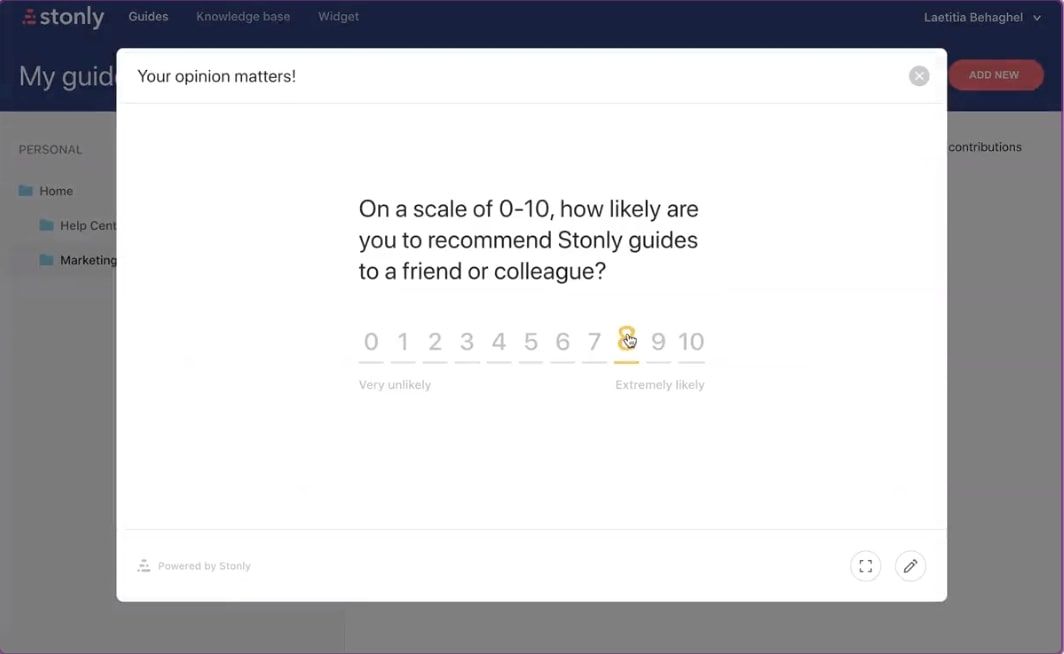
2. Improve onboarding
SaaS onboarding best practices involve showing customers the key benefits of your product and how to achieve them.
The onboarding experience should get users to use the product as quickly and seamlessly as possible. A difficult onboarding process can deter users from following through with using your product and reflects poorly on the product and brand. If your onboarding messaging doesn’t show users the value of your product, it will be hard to get new customers to adopt it.
For an easy and efficient onboarding process, use product and user onboarding tools (like Stonly) to:
- Help answer any kind of question a user might have in their journey
- Build experiences to ensure people make the most out of your product (guiding them to the features that deliver value)
- Save costs involved in high-touch human onboarding
- Decrease customer churn and increase revenue
Stonly helps drive activation by giving your customers the guidance they need to achieve their version of success with your product, with onboarding that’s tailored to each user.
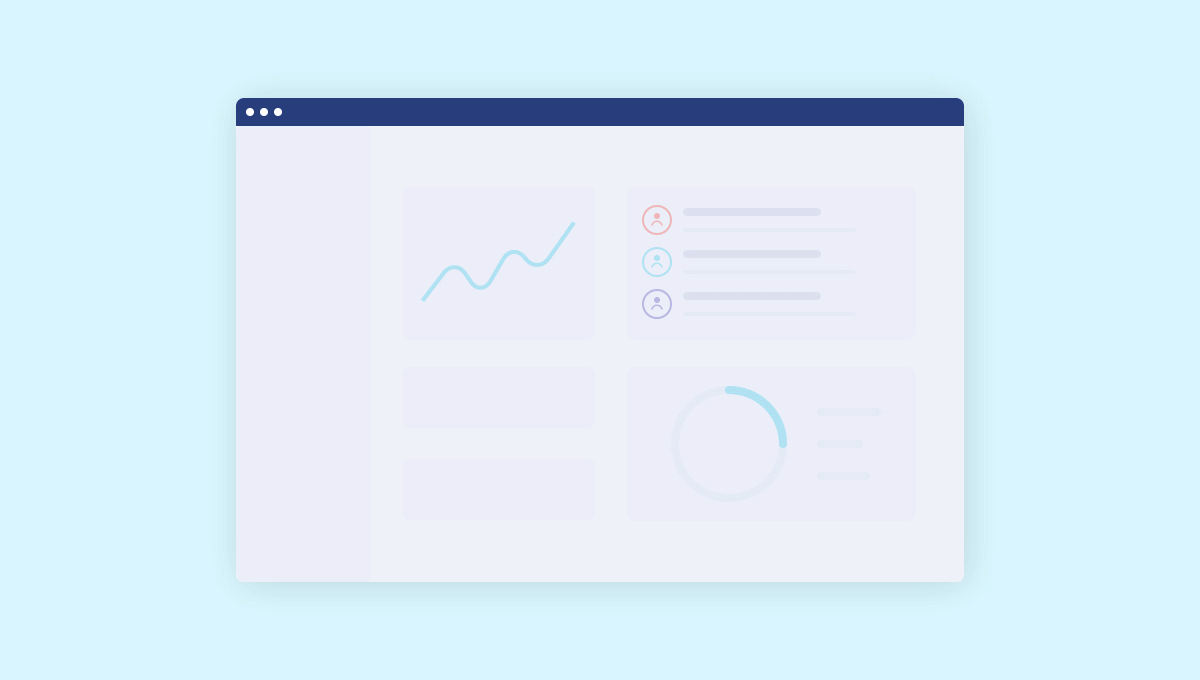
3. Improve support
Your level of customer support directly impacts the product adoption rate. But it can be time-consuming to get through all your customer support tickets and expensive to hire new staff to provide a top-notch, individualized support system. Consider investing in tools that help you meet all your support tickets and improve customer experience to improve support.
Stonly helps your customers solve issues and learn independently, with instant, personalized support and interactive customer knowledge bases. Use Stonly to build interactive guides to lead your customers to activation, issue resolution, and success on their terms.
Stonly helps teams improve customer support by delivering help everywhere with proactive in-app guides. Their interactive guides and forms empower support agents with rich ticket data and qualification to cut out the back-and-forth.
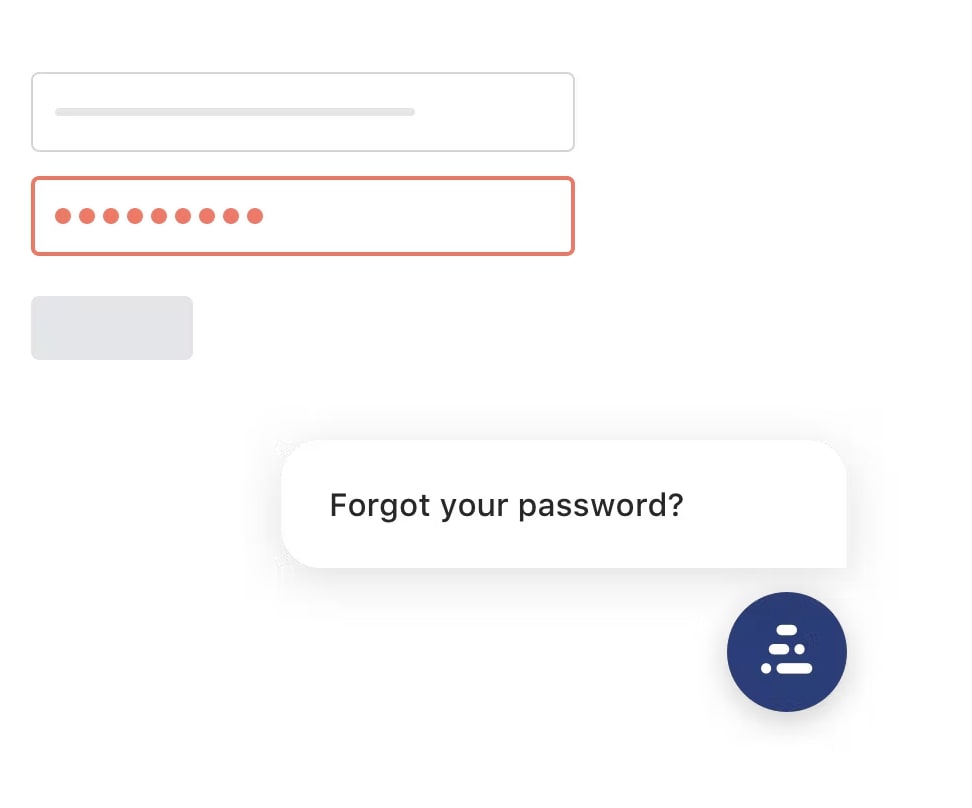
Stonly empowers your customers to discover and get their unique value from your product.
Start FREE Trial
Product adoption examples
So what does a great product adoption process look like? Here are three case studies:
Example 1: Box
Box is a content management software that makes good use of tooltips, empty states, and onboarding checklists to encourage user adoption. When a user first activates Box, they’re taken on a brief tour of the product, with useful tooltips that explain how the product works and its benefits. Empty states help users figure out what to do next: a sample ‘welcome’ PDF shows users how the product will work for them—by uploading their first file. But, here’s where Box really takes onboarding to the next level: users are given a free trial period of 14 days, with a checklist of tasks (and a progress line) that, once completed, extends the users’ free trial.
Box gamifies their checklist and rewards users’ positive interactions with their software, which quickly leads them to their ‘aha-moment’ with the product and inspires adoption.
If you’re using Stonly, you can create personalized checklists for each user—guiding them to their own version of success. Easily track user progress and help them take critical actions before moving on, to ensure a seamless adoption.
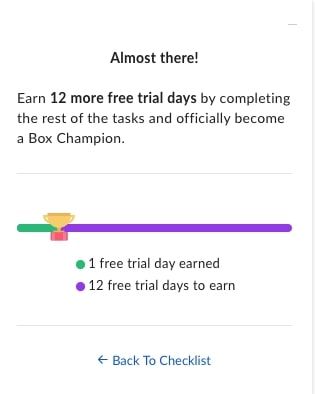
Example 2: Notion
Notion is a productivity tool and collaborative workspace that helps teams get organized. Once a user initiates onboarding, Notion collects relevant user information to tailor the experience to them. They branch the onboarding flow to make sure each user finds value in the product and its features. An onboarding checklist or to-do list then helps users identify key product and feature uses. For example, users are given demo templates to test the product’s ability to meet their specific needs—and quickly reach their ‘aha’ moment.
Notion inspires users to explore and practice using the software to encourage them to find value within the product and integrate it into their workflow, leading to an intuitive adoption.
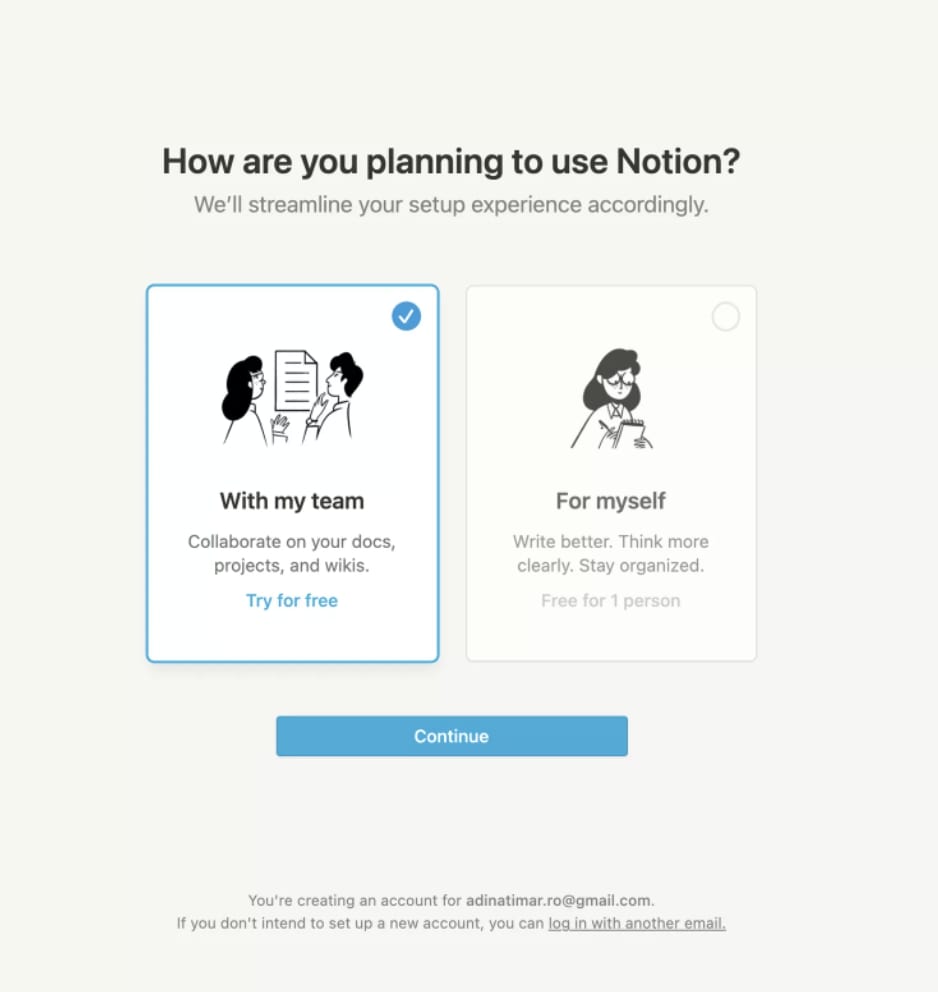
Example 3: Grammarly
Grammarly is a cloud-based typing assistant that has quietly grown into one of the most successful products on the web. The company created a tailored onboarding experience with interactive landing pages for different groups such as students and universities.
Then, they expanded the product with integrations so subscribers could use the tool directly in Microsoft Office and with web applications via a Google Chrome extension.
That’s when user adoption took off. Building a free Chrome extension reduced friction for people who wanted to use Grammarly, which multiplied the number of ways people could use the product. Grammarly educates users on finding and using its key features with a simple discovery-driven user onboarding process. Hotspots and tooltips guide users through a demo document that reveals how the product works. Then as customers are using the product, well-placed hotspots and widgets point them towards different capabilities.
The product adoption curve explained
Another key to a great product adoption process is paying attention to different user groups. Use a product adoption curve to understand your user stages.
The product adoption curve, or SaaS adoption curve, represents different groups of people and how inclined they are to use new innovative products.
By understanding the various groups, you can improve product adoption for each.
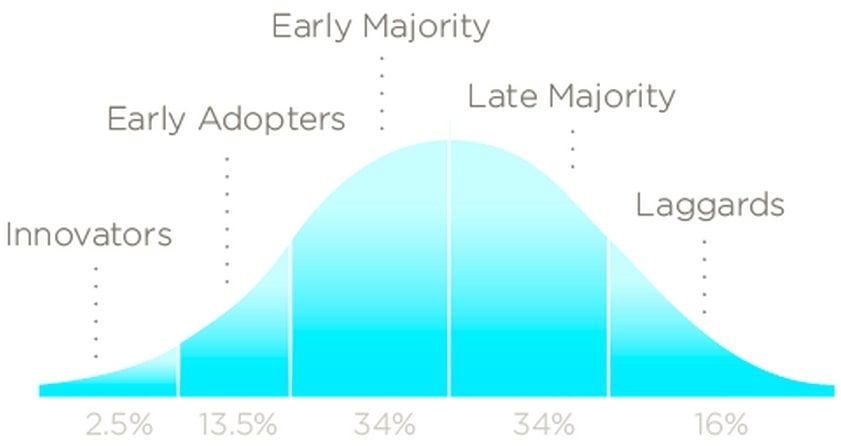
5 (and a half) user stages in the product adoption curve
1. Innovators are a remarkable group of “first adopters” of a new product. This is the smallest of adopter categories (2.5% of all users) because they’re willing to try your product before you’ve built up evidence of its ability to solve their problem.
Here’s what you need to know about innovators:
- They typically enjoy discovering new products and solutions and telling people they were the first
- They strongly feel the pain your product solves—enough that they feel they have little to lose by trying it
- They’re technically savvy enough to work through bugs or issues
- They’re risk-takers
To best position your product with innovators, play up to their desire to be the first, with messaging that early access is exclusive.
2. Early adopters are the next group of users (13.5%). These users adopt a product very early but with more caution than innovators.
Key points about early adopters:
- They’re willing to try products only after a few people try them first
- They strongly feel the pain your product solves
- They’re generally technically savvy and can troubleshoot their way through bugs
- They’re willing to take a risk if the reward seems promising
To best position your product with early adopters, focus on getting them to understand your single most important feature and release updates frequently.
3. The “chasm” represents a stage where little to no adoption occurs until the product evolves to meet the early majority’s expectations.
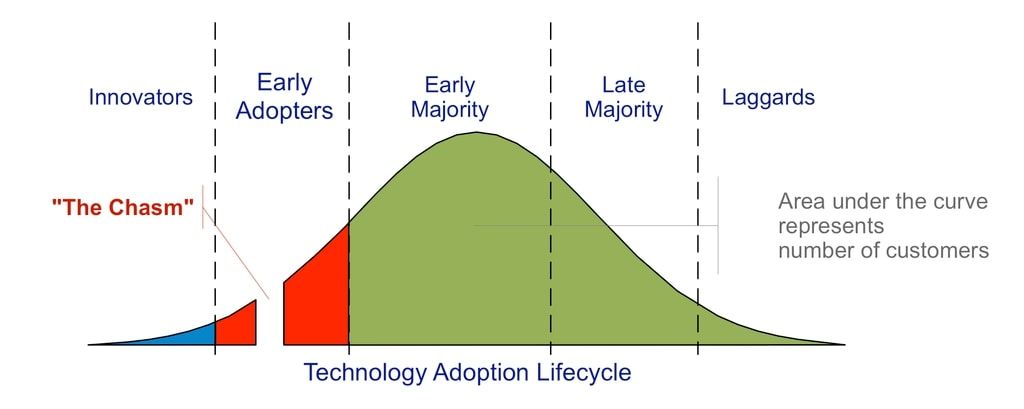
To effectively cross the chasm, get your most important features operating bug-free at scale and give extra attention to performance and security and planning the user onboarding experience.
4. Early majority users (34%) are more pragmatic than innovators or early adopters when adopting new products. They’re concerned with finding a practical solution to their pain and are open to trying new products once there’s evidence that it works.
Remember that early majority users:
- Won’t waste their energy on buggy products
- Are risk-avoidant
- They need the value of the product explained to them
- They require help with troubleshooting
To best position your product with early majority adopters, focus on adding a few new features that are hyper-relevant to your primary target market. Make sure they get great onboarding and support to inspire them to adopt.
5. Late majority users (34%) are hesitant to change and will only adopt your product when they see strong evidence that it will solve their pain or feel they have to.
Late majority users:
- Rely on peers who vet the product first
- Feel the pain your product solves but are generally fine living with it
- Are intolerant to software that isn’t fully functional
To best position your product with late majority adopters, develop additional features that make your product more inclusive for a wider variety of users and offer free plans or trials so they can experience value with no risk.
6. Laggards are skeptical “last users” (16%) who avoid using new products and require some convincing.
Laggards:
- Feel the pain your product solves but are willing to live with it
- Are usually not technically savvy
- Avoid taking risks at all costs
To best position your product with laggards, they’ll need hand-holding on how to use the solution, a great onboarding process, and customizer support. Focus on collecting user insights to optimize your solution. If your solution helps many users, they’ll slowly catch on.
3 Tools for a smooth product adoption process
The following tools can help with onboarding, support, and product analytics for a seamless product adoption process.
Onboarding
Stonly
With Stonly, you can activate more customers at first touch and launch interactive onboarding and product tours adapted to each user’s needs. You can also give your customers personal plans for success with adaptive checklists to effectively guide users and track their progress.
Drive discovery and deepen adoption with Stonly by placing hotspots, tooltips, and interactive product guides in your UI to introduce users to the right features that solve their problems and deliver value.
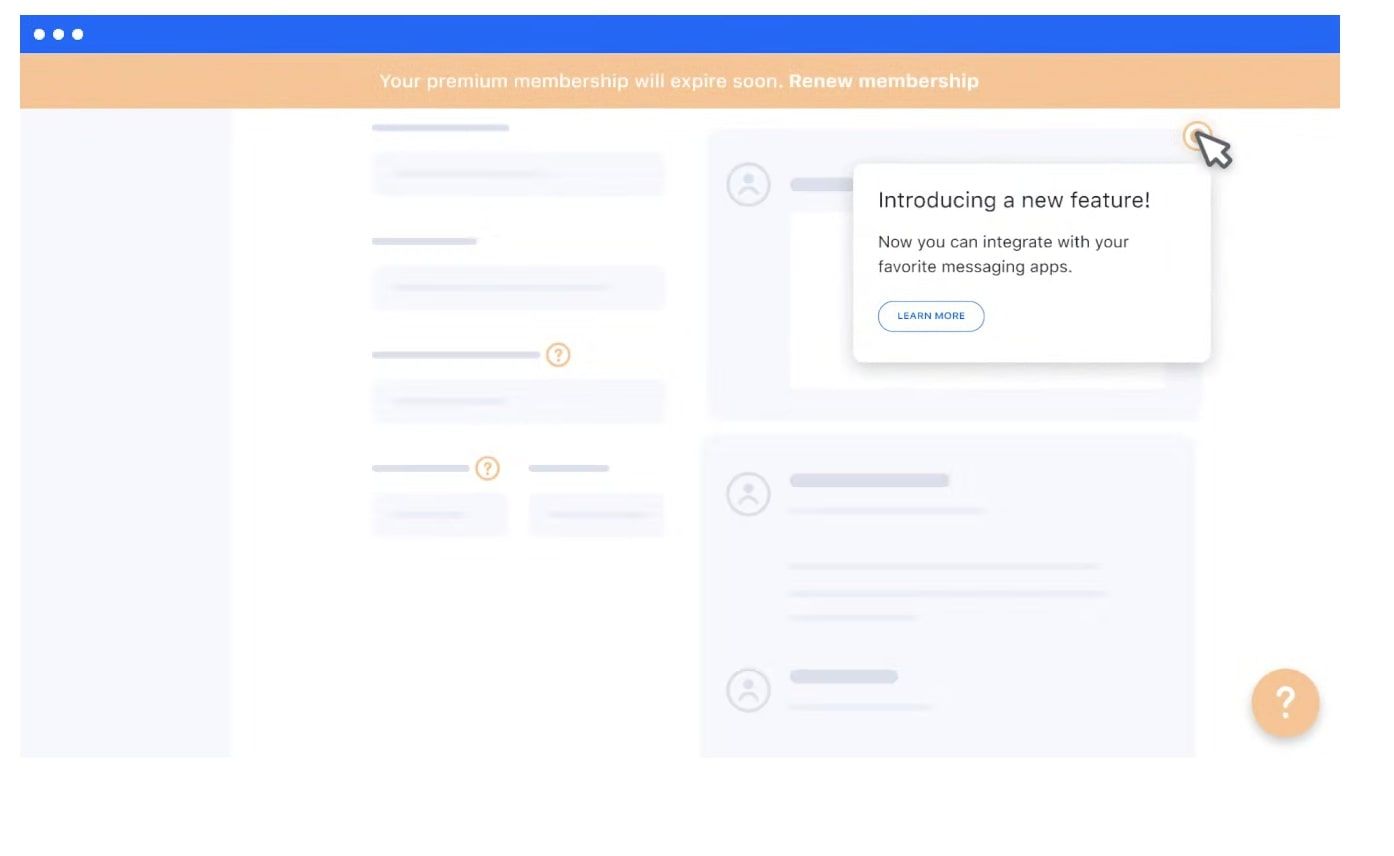
Support
Stonly
Stonly’s self-serve support tools help you serve more customers with on-demand help and interactive customer knowledge bases that effective solutions and instant troubleshooting.
Use Stonly to reduce customer tickets with proactive in-app guides, and resolve issues faster and more effectively with fewer touches. When customers need to speak to a support team member, our interactive guides and forms empower support agents with rich ticket data and qualification to cut out the back-and-forth.
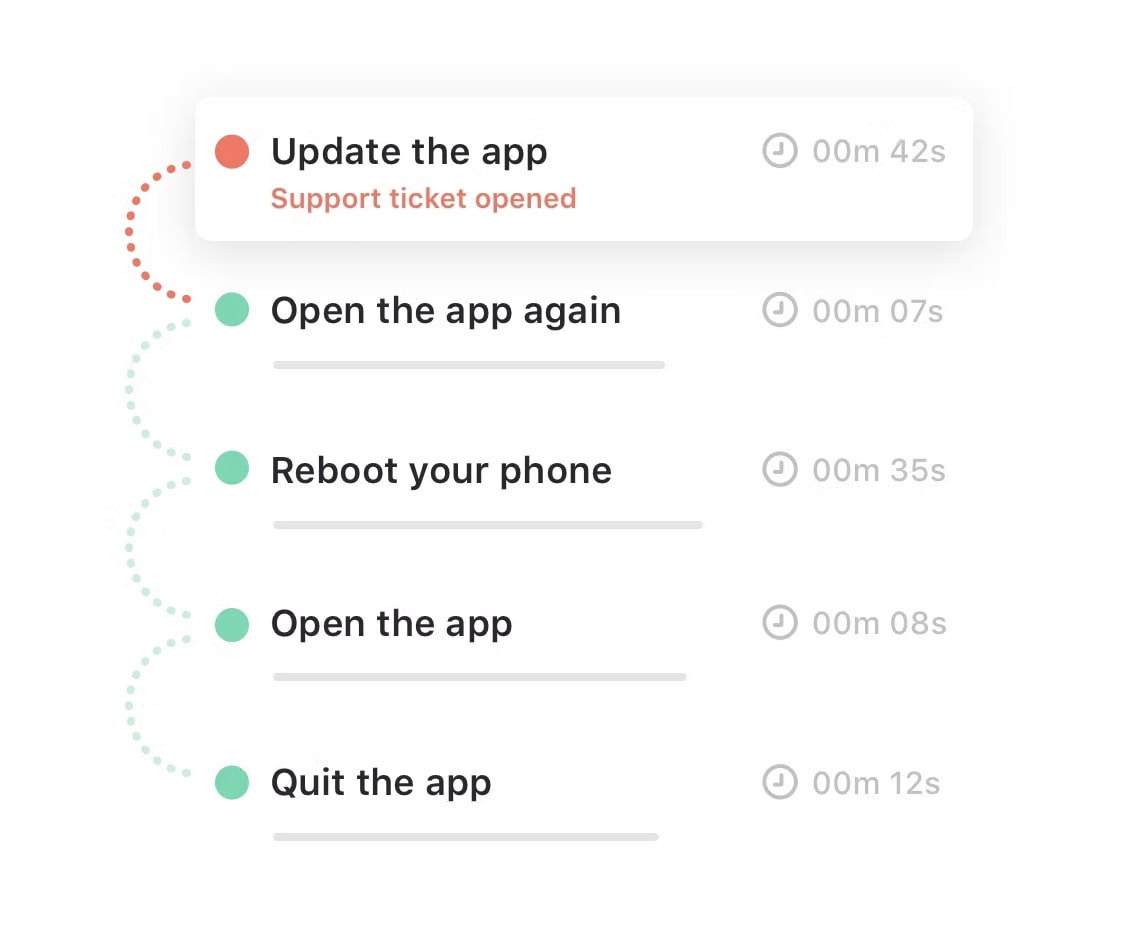
Stonly helps you guide more customers to immediate value with your SaaS product, starting with onboarding.
Start FREE Trial
Product Analytics
Google Analytics
Use Google Analytics to see where visitors come from, what device they use, and how they interact with your website or product pages.
You can leverage this data to increase conversions, reduce bounce rates, and enhance engagement with your digital products. This could be your product information website, a landing page, or your core product itself.
Related Post: 12 Strategies to Boost Mobile App Adoption
In conclusion…
Product adoption is crucial for product teams and SaaS companies to safeguard customer retention and loyalty, ensure users are getting value out of all of your software’s relevant features, and build recurring revenue.
With its comprehensive onboarding and adoption tools, Stonly is your best partner to increase product adoption. By combining rich user data with a knowledge base responsive to users' real-time actions, you can guide customers on their personal paths to success.
Stonly enables you to provide value to your customers in the right place at the right time directly inside your app or service.
See How
Frequently asked questions about product adoption
Why is product adoption important?
Product adoption is important for SaaS businesses and product managers as it’s generally the success criteria for product or feature launches and recurring and predictable revenue.
Why is product adoption low?
Product adoption can be low due to a variety of factors, including:
- Lack of customer onboarding time and resources
- Poor customer experience
- Overstretched or understaffed support staff
- Product bugs or issues
- Product flaws
How do you accelerate product adoption?
You can accelerate product adoption by:
- Improving the product: Collect user feedback and embrace effective customer communication channels to validate your product ideas and understand how to improve the existing customer experience.
- Improving the onboarding process: The onboarding experience should focus on getting users to use the product as quickly and seamlessly as possible.
- Improving support: Invest in tools that help you meet your support tickets and improve customer experience.
Tools like Stonly streamline customer onboarding, help customers discover relevant features, and resolve issues quickly with fewer touches, accelerating product adoption by delighting customers.
Why do most new products fail?
Product failure can be the result of numerous factors. Most often, it’s due to poor user experience, lack of quality control, poor product onboarding, sloppy implementation, and little to no product adoption.
How do you calculate product adoption?
Calculating product adoption involves determining what actions a user takes within your app lead to retention. It’s essential to define your own product adoption metrics, as well as include a combination of other metrics, such as:
Key metrics
- Adoption rate: the number of new users divided by the total number of users
- Feature adoption: the full usage of a product’s specific features
- Time to value: measure the time to upgrade from free to paid, the time of adoption of new features, and the time to achieve desired customer ROI on your product
Additional metrics
- Onboarding completion: measure the time it takes to get users ready to implement your product across an organization
- Conversion rate: from signup to first essential action taken
- Frequency rate: divide the number of times the event occurs by the length of time
![What is Product Adoption & How to Do It Right? [Complete Guide]](/blog/content/images/2022/06/Software-product-adoption.jpg)